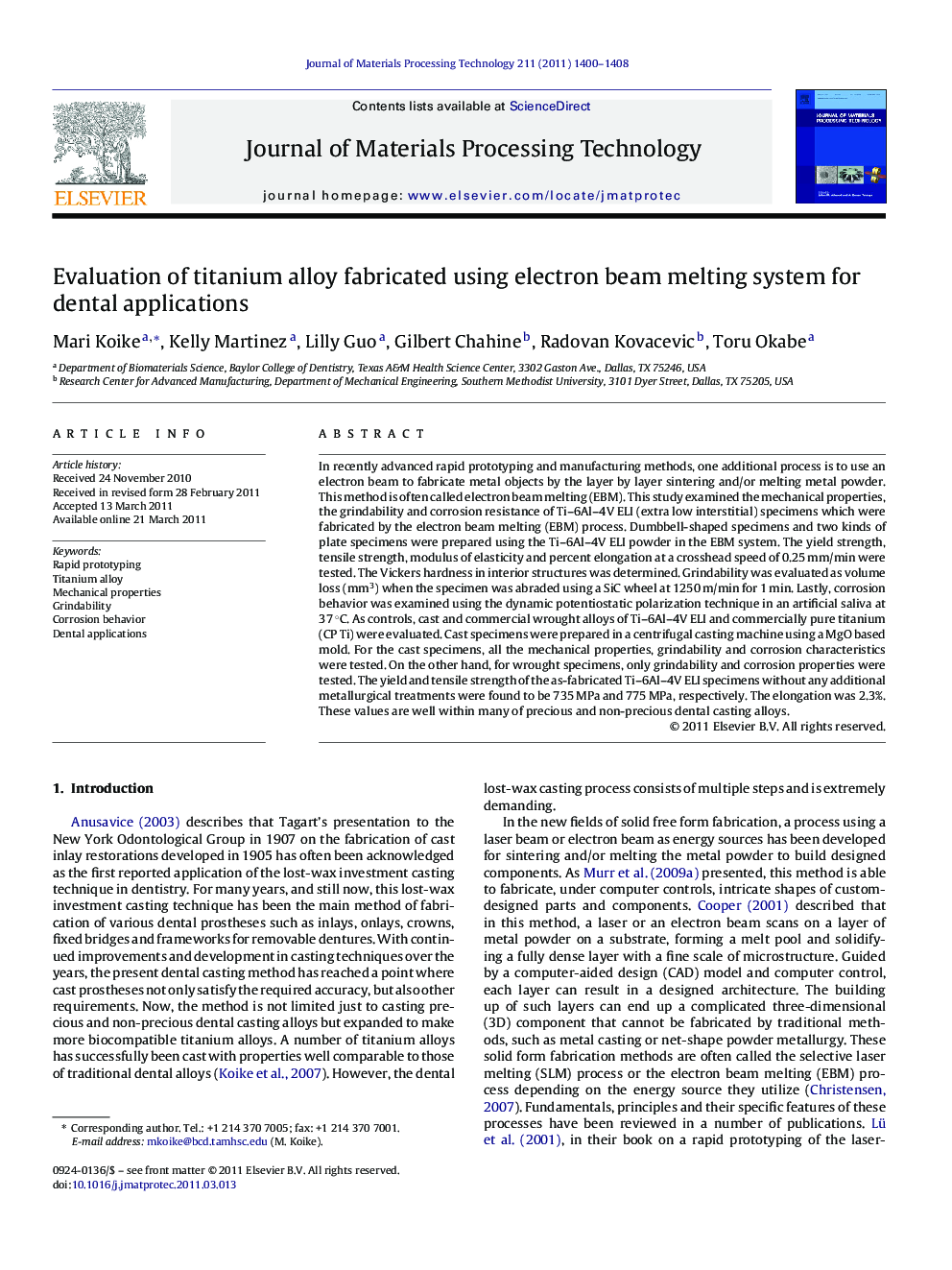| کد مقاله | کد نشریه | سال انتشار | مقاله انگلیسی | نسخه تمام متن |
|---|---|---|---|---|
| 798430 | 903258 | 2011 | 9 صفحه PDF | دانلود رایگان |

In recently advanced rapid prototyping and manufacturing methods, one additional process is to use an electron beam to fabricate metal objects by the layer by layer sintering and/or melting metal powder. This method is often called electron beam melting (EBM). This study examined the mechanical properties, the grindability and corrosion resistance of Ti–6Al–4V ELI (extra low interstitial) specimens which were fabricated by the electron beam melting (EBM) process. Dumbbell-shaped specimens and two kinds of plate specimens were prepared using the Ti–6Al–4V ELI powder in the EBM system. The yield strength, tensile strength, modulus of elasticity and percent elongation at a crosshead speed of 0.25 mm/min were tested. The Vickers hardness in interior structures was determined. Grindability was evaluated as volume loss (mm3) when the specimen was abraded using a SiC wheel at 1250 m/min for 1 min. Lastly, corrosion behavior was examined using the dynamic potentiostatic polarization technique in an artificial saliva at 37 °C. As controls, cast and commercial wrought alloys of Ti–6Al–4V ELI and commercially pure titanium (CP Ti) were evaluated. Cast specimens were prepared in a centrifugal casting machine using a MgO based mold. For the cast specimens, all the mechanical properties, grindability and corrosion characteristics were tested. On the other hand, for wrought specimens, only grindability and corrosion properties were tested. The yield and tensile strength of the as-fabricated Ti–6Al–4V ELI specimens without any additional metallurgical treatments were found to be 735 MPa and 775 MPa, respectively. The elongation was 2.3%. These values are well within many of precious and non-precious dental casting alloys.
Journal: Journal of Materials Processing Technology - Volume 211, Issue 8, August 2011, Pages 1400–1408